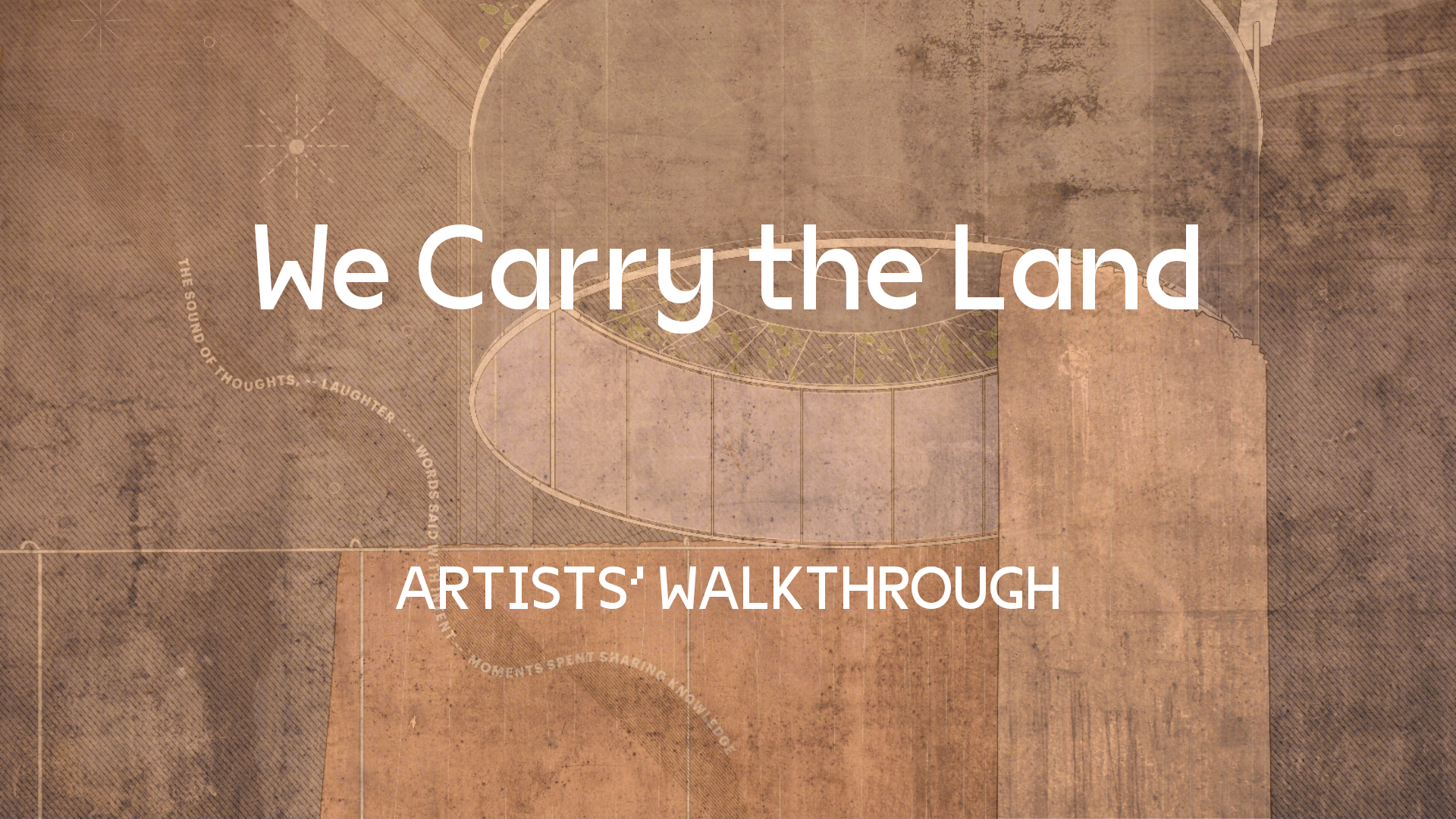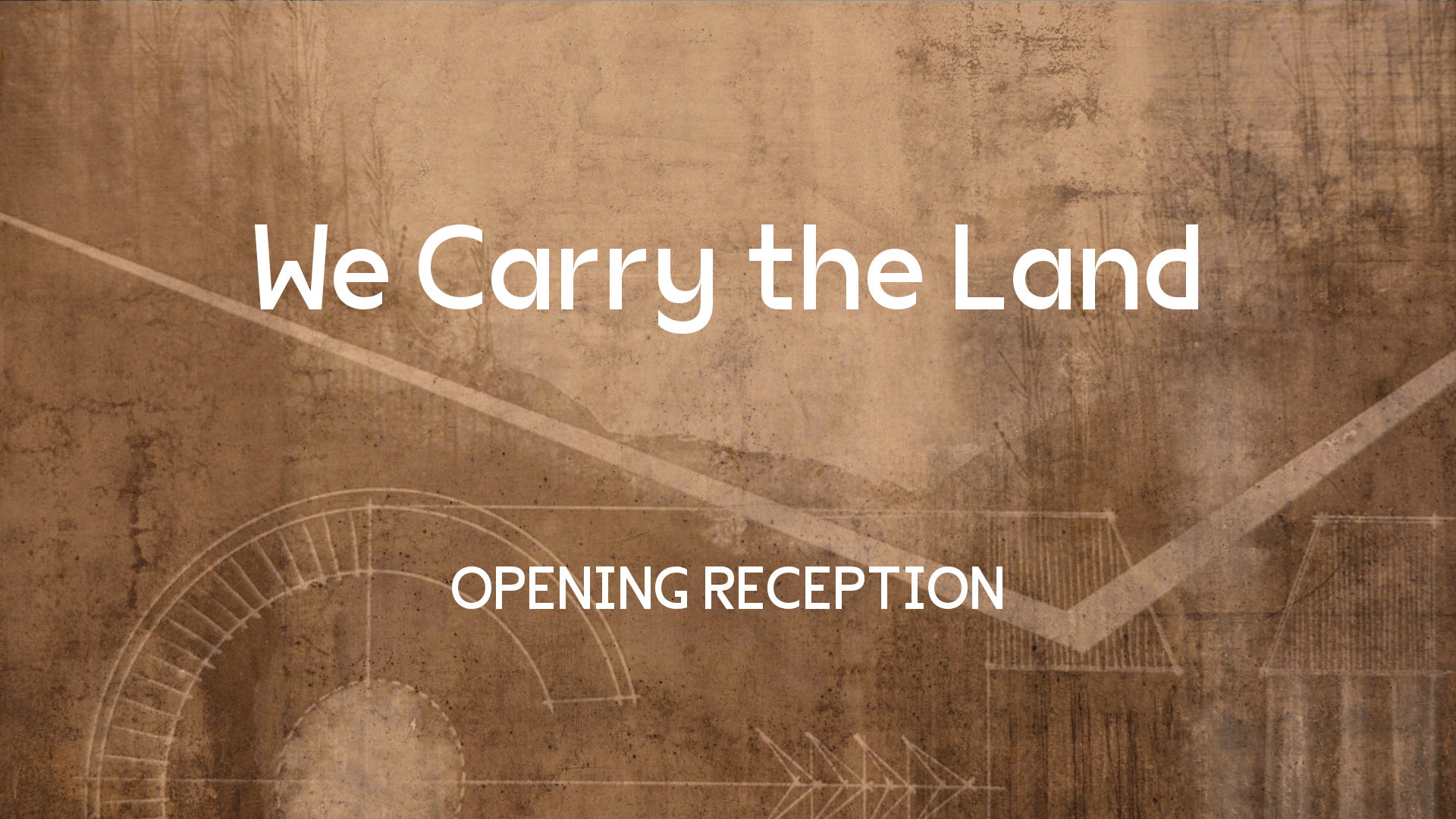We Carry the Land, installation view, 2024. Photo courtesy of Craft Contemporary. Image: Marc Walker
We Carry the Land is an architectural exploration of space, time, and form born from an alignment of varied Indigenous foundational ways of being, designed for and installed in the M&A x Craft Contemporary Courtyard this Summer 2024. Rooted in the sacredness of the natural world and informed by experiences of territorial geographic relocation, the project presents a spatial identity of what it means to be a part of the Indigenous diaspora; grounded, yet simultaneously flexible.
Through material and structural engagements with existing infrastructure, the project introduced a fluctuating experience of the sacred and intimate to the courtyard. An existing circle inscribed in the concrete ground, the remnant of a primary entry revolving door for a building that once stood in the space, became an anchor for the spatial intervention. In its place, a new circle was built up with heavy earth and juxtaposed with the soft lightness of a flowing curtain system above. While the earthen material highlighted the circle, a unifying symbol in various Indigenous cultures, the curtain system extended across the courtyard, representing expansive transformation and the dynamism of movements and exchanges between pasts and possible futures.
We Carry the Land presented the two-fold idea of anomaly: the paradoxical notion of a dynamic ground plane and the enduring presence of American Indian peoples despite efforts of erasure.
We Carry the Land, installation view, 2024. Courtesy of Craft Contemporary. Photo: Marc Walker
We Carry the Land is designed by six emerging Native architectural and graphic designers. Recognizing the diversity of Indian Tribes, individual identities, and shared experiences with U.S. Indian laws and policies, the group work reflects a coming together of unique communities, spatial experiences with multiple lands and waters, archival work, and traditional and new technologies.
Celina Brownotter is a Hunkpapa Lakota and Diné designer passionate about collaborating with Native communities. Her research focuses on how culture, beliefs, and traditions can positively affect Lakota tribal housing. Having grown up on the Standing Rock Sioux Reservation, she is a steadfast advocate for place-based design.
Anjelica S. Gallegos (Jicarilla Apache Nation and Pueblo of Santa Ana) pushes boundaries of design thought and practice, especially in sensitive environments like the Southwest, Arctic, and New England coast. Anjelica is the co-founder and director of the Indigenous Society of Architecture, Planning and Design (ISAPD), a 2023 Fulcrum Fund recipient, an ambassador of President Obama’s Generation Indigenous Initiative, and has served in public relations for the Jicarilla Apache Nation.
Freeland Livingston (Diné | Navajo) is an architectural designer interested in the intersection of technology, contemporary life, and traditional Indigenous teachings. Using computational tools has been central to his work, whether in academic design or mixed reality documentation. Freeland has over ten years of experience in architecture, seven of which he’s worked with Native communities within the Navajo region of the US.
Selina Martinez is a member of the Pascua Yaqui Tribe and Xicana, currently pursuing her architectural license.
She was awarded the US Artists Fellowship (2024) and a Radical Imagination Grant (2020) from the NDN Collective to establish Juebenaria, a project providing an evolving collection of a plurality of Yaqui lived experiences through digital media. She has taught at ASU and is also the cofounder of Design Empowerment Phoenix.
Bobby Joe Smith III is a Black and Indigenous designer and media artist from the Hunkpapa and Oohenumpa Lakota tribes. His research draws from the decolonial, abolitionist, and post-apocalyptic strategies of Black and Indigenous people, and his works seek to reveal vectors leading toward decolonial futures and resonate with the people and movements that comprise his community.
Zoë Toledo is Diné Asdzáán, a member of the Navajo Nation, and, as both a designer and researcher, engages in a practice of narrative change. She teaches design studios at ASU, co-founded the Harvard Indigenous Design Collective, and has been published in The Avery Review.
We extend gratitude to a constellation of mentors and guides, including architects Tammy Eagle Bull, Sean Connelly, Bob Ramirez, and R. Scott Mitchell.
We Carry the Land, installation view, 2024. Courtesy of Craft Contemporary. Photo: Marc Walker
We Carry the Land was generously supported by The Graham Foundation and the Los Angeles Department of Cultural Affairs, with additional funding from the California Arts Council and Los Angeles County Department of Arts and Culture.
For a full list of M&A’s sponsors, visit our Thank You page.
Past Events
Read the press release here.










